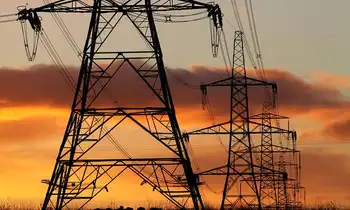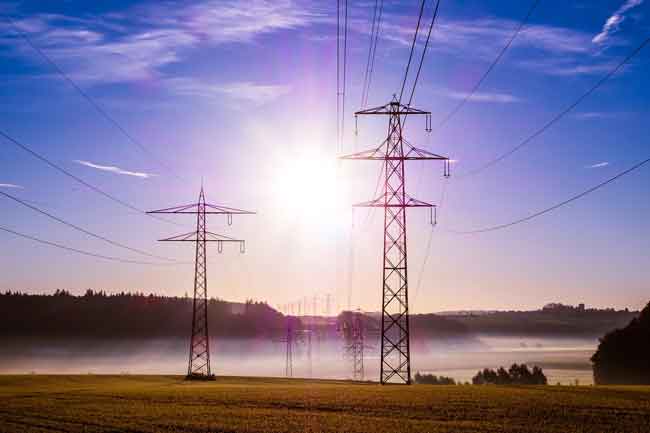CanadaÂ’s potential for renewable generation
By Globe and Mail
Substation Relay Protection Training
Our customized live online or in‑person group training can be delivered to your staff at your location.

- Live Online
- 12 hours Instructor-led
- Group Training Available
Rising oil prices and worries about climate change are pushing a global demand for cleaner fuels. But ethanol production is driving up grain prices (potentially further destabilizing places such as Afghanistan, where wheat prices shot up 60 per cent last year) and may also be causing the destruction of rain forests.
What can a conscientious country like Canada do to help? Answers may lie in research coming out of environmental studies programs at universities across the country.
In the case of ethanol production, one solution may come from Steve Helle, a member of the Natural Resources and Environmental Studies faculty at the University of Northern British Columbia in Prince George, B.C.
Together with researchers from the University of British Columbia, Dr. Helle is studying ways to use waste material from the province's pulp mills to create more valuable products, such as ethanol.
"The kraft mill takes wood. Half gets made into pulp, half gets made into liquors and burned," he says. "We want to take some of the sugars and make ethanol."
Mills in Quebec can already produce biofuels, but the kraft mills used in the West work differently. If Dr. Helle and his colleagues are successful, then Canada's forest industry stands to make significant gains.
First, while pulp will remain the primary product, using mills to produce other things will buffer them against fluctuating pulp prices, which fell more than 6 per cent in 2006 according to Statistics Canada. Also, by cutting the amount of sugar going through the mill, the amount of pulp going through can increase.
An acre of corn, which is replacing wheat as a crop of choice thanks to ethanol demand, produces about 1,130 litres of ethanol, according to the university. But an acre of pine trees has the potential to produce 10,000 litres. Also, Dr. Helle notes, producing ethanol from corn provides only a 30-per-cent net gain over the resources used to produce the fuel, compared with about 300 per cent for lignin cellulose.
Perhaps best of all, marginal timber — a serious concern in British Columbia and parts of Alberta because of the mountain pine beetle infestation — could be put to use. With a biorefinery, a mill could produce ethanol or lignin to use as a binder in wood products, or for manufacturing vanillin, used in foods and pharmaceuticals.
Another big area of campus environmental research is alternative energy. Wind and solar generation fluctuate wildly, making them difficult to integrate into power grids. So, Jose Etcheverry, who teaches in the Faculty of Environmental Studies at York University in Toronto, is working with governments and industry to find solutions to the problem of bringing alternative energy online.
Creating a steady flow of electricity from wind or solar demands energy storage systems, such as batteries or using excess electricity to pump water uphill into reservoirs so it can be released to generate electricity when weather is cloudy or calm.
But Mr. Etcheverry, who is also a policy analyst with the David Suzuki Foundation, isn't working on new storage systems: He's researching policies that will encourage them to be built. Last week, he presented those policy ideas to grid operators from across Canada and California at a meeting in Toronto.
Ontario has a "standard contract offer" policy that pays 11 cents a kilowatt hour for wind, hydroelectric or biomass power, and 42 cents for solar, Mr. Etcheverry notes. The strategy, just over a year old, has increased alternative energy generation, but it does nothing for people who want to create the backup systems needed by the grid, he says.
With the right policies in place, he says, Canada could produce 100 per cent of its energy from renewable sources more easily than any other country, thanks to resources such as plentiful rivers and wide open, windy prairies.
More than that, Canada could take a leading role in developing the technology and policies that will help the rest of the world meet its green energy needs, he says.
"If Canada embraces this idea in full, this is what will power our economy into the 21st century," he says, adding that "our situation is quite privileged because of our small population and big land mass."
That land mass contains many rich natural resources that are the fuel for the Canadian economy. Understanding how natural systems work is at the heart of many environmental studies programs, which bring together people with backgrounds in chemistry, biology, environmental engineering, geography, sociology and many other disciplines.
Richard Westwood, a professor of biology and environmental studies at the University of Winnipeg, studies the effects of timber harvesting on biodiversity in Canada's boreal forests, and compares the effects to those of natural processes such as fire, insect infestation or disease. Dr. Westwood's research is done at the behest of government agencies or forest companies such as Tembec Inc. and Louisiana Pacific Corp.
Both forest fires and logging remove trees from the landscape, but what isn't known precisely is how those methods change the makeup of the plant, animal and insect populations. In his research, Dr. Westwood compares similar tracts that have been cleared by different means. What he has found in Manitoba is that black spruce forests eventually — over 30 to 50 years — recover to much the same state whether initially cleared by fire or by logging.
However, in the shorter term there are some significant differences. For example, there are species of ground beetle that occupy only burned tracts. These beetles don't move into harvested areas, which keep an intact layer of vegetation so that old-growth species are more likely to remain.
A healthy forest has tracts of different ages, Dr. Westwood says. By understanding the different effects that natural factors and harvesting have on biodiversity, we can better understand how to replicate nature and keep that healthy balance.
Dr. Westwood likens forest renewal to a trough with a ball in it. The trough can swing one way or the other, and the ball will roll back and forth. Tip it too far, and the ball falls out. Forests are resilient, but only to a point. Knowing how to maintain that mix of different tract ages with a natural range of species is the key to keeping our forests healthy.











